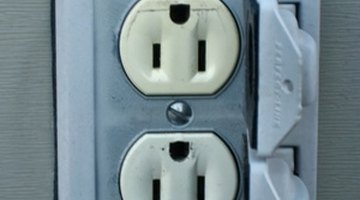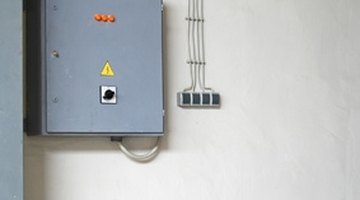Types of House Wire in Canada
Residential wiring in Canada is governed by the Canadian Electrical Code (CEC). Wire can be either solid or stranded. Most wire used in houses is solid because it is easier to work with and takes less installation time.The most common type of cable used in houses is called NM D 90. This designation stands for non-metallic dry service cable rated at maximum of 90 degrees Celsius.
Wire Size and Rating


Wires are commonly labeled according to size and the amperage for which they are rated. The rating is for the maximum value allowed. Some common examples include
14--rated for 15A--requires a 15A breaker
12--rated for 20A--requires a 20A breaker
10--rated for 30A--requires a 30A breaker
8--rated for 45A--requires a 40A breaker
6--rated for 65A--requires a 60A breaker
3--rated for 105A--requires a 100A breaker
Commonly Used Cables
For 70 percent of Canadian house wiring, a 2-conductor #14 cable is used. This application would include electrical plugs, switches and lights. A 3-conductor #14 would be used in three-way switches and split receptacles. A 2-conductor #12 is needed for anything that uses a maximum of 20 amps, such as kitchen receptacle circuits. An electric dryer would require a 3-conductor #10 while an electric range requires a 3-conductor #8. Some Canadian electrical authorities require a minimum wire size of #12 AWG (American wire gauge) and do not allow the use of #14.
Color Coding
Canadian AC wiring is color coded to protect the installer. The protective ground is green or green with a yellow stripe. The neutral is white, hot (active) wires are black and a second active is red. Three phase lines are red, black and blue. Wiring in Canada should always be installed by a licensed electrician and inspected independently to assure CEC compliance.
References
Resources
Writer Bio
Kevin Ann Reinhart, a retired teacher-librarian, has written professionally since 1976. Reinhart first published in "Writers' Undercover" Cambridge Writers Collective II. She has a bachelor's degree in English and religious studies from the University of Waterloo and a librarian specialist certificate from Queen's University and the University of Toronto.
Photo Credits
- electric outlet image by Albert Lozano from Fotolia.com
- electric panel image by DXfoto.com from Fotolia.com
More Articles



